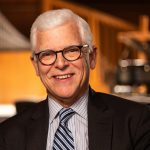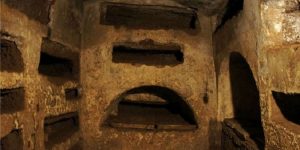
Tom just died.
I spoke to Paul last night, Tom’s brother and my good friend for many years. A few months ago, Paul let me know that Tom was in a losing battle against cancer. Although his passing was expected, it was hardly welcome. Paul lost his brother, his sister Barb is weeping, and their youngest brother David is hurting.
Tom’s son heads up the COVID wing at a major hospital in California. Paul recounted his stories about the agony of seeing so many die this past year, separated from family yet with faithful nurses and doctors gathered around.
All so painful, a story told again and again in our families, churches, and place of work. “Did you hear about…?” We promise to pray, often because we do not know what else to say.
Facing Death – Greek and Latin Thoughts
For centuries humans have tried to comprehend mortality and find words of solace that will help ease our pain and that of others in the face of death.
Ancient Greeks and Latins faced death with hopeless resignation. In Aeschylus’s play Eumenides, the god Apollo says, “But when once a man has died, and the dust has sucked up his blood, there is no rising again.” In Theocritus’ Idlyll, the character Corydon laments, “While there’s life there’s hope; it’s the dead who have none.” The most common ancient funerary inscription, found in both Latin and Greek, offers no hope: “I was not, I was, I am not, I care not.”
Vague ideas about the afterlife circulated widely as well. In one of his epigrams Antipater of Thessalonica remarked: “All men have the same way down to Hades; if mine is quicker than others’, I shall be face to face with Minos the sooner.” The afterlife meant disembodied existence. The hope that a body could rise from the dead was entirely absent.
Facing Death – Jewish Belief
The resurrection of the dead became a common piece of Jewish thought although, as Luke said in Acts, “The Sadducees say that there is no resurrection” (23:8). In Daniel’s vision of the end times we hear, “Multitudes who sleep in the dust of the earth will awake” (12:2). The Psalms of Solomon, a book penned during the first century BC (not by Solomon!), offered the hope that “those who fear the Lord shall rise up to eternal life.”
Facing Death – Christian Hope
Jesus taught the resurrection of the dead (John 5:28-29; 11:25) but the most extensive New Testament discussion about the resurrection surfaces in 1 Corinthians 15. In one of his earliest writings, 1 Thessalonians, Paul let the young believers know that the dead would be raised upon the Lord’s return (1 Thessalonians 4:13-18). The union between the resurrection of Christ and the resurrection of the believer is so tight that, according to the apostle, to deny the believers’ resurrection is, in fact, to deny Christ’s resurrection (1 Corinthians 15:13, 16).
Jesus also believed in an afterlife before the resurrection. He promised the thief on the cross, “Today you will be with me in paradise.” Paul occasionally taught about the intermediate state between death and resurrection (2 Corinthians 5:6-8; Philippians 1:20-24). But he does not stop there. He takes the next step, contending that as Christ was raised from the dead so, too, God will raise those who have died in Christ.
And Today?
 Surprisingly, in our day homilies for the dead and discussions about the deceased focus on the person’s continued life in a disembodied state. “She has gone to be with the Lord,” or “He’s in a better place now.” Hardly ever do we hear about the resurrection of the body. A few years ago, my students and I explored Paul’s teaching on the resurrection of the dead. Someone in the class who had served in the church for decades exclaimed, “I’ve never heard that before!” Astounding, indeed!
Surprisingly, in our day homilies for the dead and discussions about the deceased focus on the person’s continued life in a disembodied state. “She has gone to be with the Lord,” or “He’s in a better place now.” Hardly ever do we hear about the resurrection of the body. A few years ago, my students and I explored Paul’s teaching on the resurrection of the dead. Someone in the class who had served in the church for decades exclaimed, “I’ve never heard that before!” Astounding, indeed!
We may be able to trace back the lineage of this absence of teaching about the resurrection of the dead to ancient Greek thought. In the early centuries, some Christians began to move towards a Greek notion of the immortality of the soul without the hope of bodily resurrection. For example, one funerary inscription from AD 145 says, “Most excellent earth covers the body of Banao, but my soul is in paradise and rejoices in the company of the young, victorious martyrs.” But in the end, the resurrection of the dead became embedded in both the Nicene–Constantinopolitan Creed (AD 381) and the Apostles’ Creed (AD 390): “We look for the resurrection of the dead;” “I believe in … the resurrection of the body.” This we believe.
Christ has defeated the last enemy!
Happy Easter! “Christ is risen.” To which we respond, “He is risen, indeed!” The risen Christ is the promise of our resurrection from the dead. And, so, “The last enemy to be destroyed is death” (1 Corinthians 15:26).
 Dr. Gene L. Green is the Dean of Trinity International University – Florida. Visit them at tiu.edu/florida
Dr. Gene L. Green is the Dean of Trinity International University – Florida. Visit them at tiu.edu/florida
Read last month’s article by Dr. Gene L. Green at: goodnewsfl.org/violence-in-the-land/

Comments